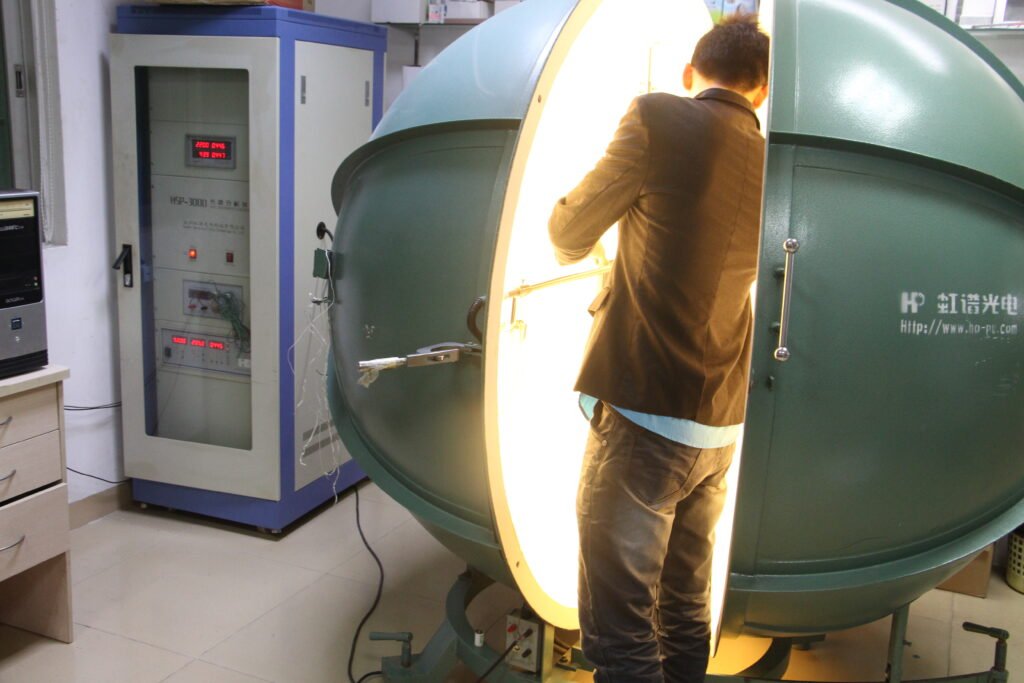Natural light is a beautiful and dynamic source of white light, with its tone and brightness changing throughout the day and the seasons. The tone of white light is called color temperature, which is measured in degrees Kelvin (K). The color temperature of natural light changes during the day, from a warm orange-red hue of about 2000K at sunrise and sunset to a cooler blue-white hue of about 5500-6500K at noon. In the shade, the color temperature can even reach up to 8000-10000K, which is an extremely cool blue-white hue

The color temperature is expressed in absolute temperature K. It is a standard black body (e.g. platinum) that is heated to a certain temperature.
When the temperature rises to a certain level, the color starts to change gradually from red, orange, yellow, green, blue, indigo (blue-violet), violet, and so on.
Using this characteristic of light color change, the light color of the light source and the light color of the black body at the same time.
We call the temperature of the black body at that time the color temperature of the light source. When the color temperature is around 3000K, the light color is yellowish.
When the color temperature is above 5000K, the light color is blue.
Different color temperatures of light have different lighting and visual effects.
Different color temperatures correspond to different colors of light as shown below.
Different wavelengths cause different color sensations to the human eye, from red, orange, yellow, green, blue, indigo (blue-violet), and violet.
The sensitivity of the eye varies strongly with the wavelength.
For example, under very good lighting conditions, the eye is 20 times more sensitive to light at 550nm wavelengths (yellow light) than to red or blue light.
This is an important reason why yellow light is used in the fog lights of most cars and street lights on the road.
Color temperature is a measure of the temperature of the color, not the brightness of the light.
The color temperature of halogen lamps can range from 2300K to 7000K;
HID lamps can have a color temperature from 4200K to over 8000K;
The higher the color temperature of the lamp, the less it penetrates fog and rain (the less bright).
Large manufacturers such as Philips so far only produce xenon lamps with a maximum color temperature of 6000K. The following are the performance of different color temperatures:
Light color temperature Light effect
3000K yellow light, strong penetrating power
4200K white with yellow, the original car with xenon lamps
5000K light all white, the highest color temperature of the European standard
6000K light all white, slightly blue
6500K sunlight in the daytime
7000-8000K white with obvious blue
8000K blue light, penetration is very poor recommended color temperature of about 6000K is exactly the most white slightly began to turn blue color temperature.
The human eye is easy to accept, not easy to fatigue and improve safety, while halogen lights are poor.

How to choose the color temperature of each area of the home?
Teach you a simple basic strategy that
Warm low color temperature can be used in areas such as living rooms, dining rooms, bedrooms, corridors, etc..
Similar to the daylight “cool” medium and high color temperature, can be used in places that require more attention to detail needs, such as bathrooms, garages, offices, kitchens (worktops).
Such as bathrooms, garages, offices, kitchens (operating tables), cool white light is a good choice.
Look at each area in particular:
Living room
Living room is usually used with low color temperature (2500K – 3500K or so), which helps to highlight a luxurious, warm atmosphere.
For multiple types of lights in the living room, should be unified to select the same color temperature, visually to avoid showing mixed and chaotic.
For example, if the LED downlight with a warm color temperature, then the strip, ceiling lights, wall lamps, table lamps should also be unified selection of warm color temperature

Bedroom
Use low color temperature (2500K – 2700K or so) for the bedroom, because the color temperature around 2700K is usually expressed as “warm white” light.
The light color is orange, warm and comfortable, just like in “grandma’s house”. Warm light is considered to be a comfortable and cozy light for the home.
It is really perfect for use in the bedroom.

Study room
Study room with neutral color temperature LED downlight (4000K – 4500K positive white light).
This color temperature is closer to daylight, and the light color provides great contrast between black letters and white or off-white paper, making it easier for the eyes to read.
Helps keep the mind clear, focused and efficient.


Bathroom
Bathroom with neutral color temperature lamps (4000K – 4500K positive white light), and high color rendering index (Ra ≥ 90).
and the color rendering index should be high (Ra ≥ 90). Such a sense of daylight color temperature, will allow women in the bathroom can also be like in the outdoor sunlight, easier to sort out makeup.
On the contrary, the bathroom is strictly prohibited to use warm color temperature lamps, or low apparent finger models, because it is easy to produce “color difference”, resulting in makeup is too thick, and
Color selection deviation and other problems, causing embarrassment.

